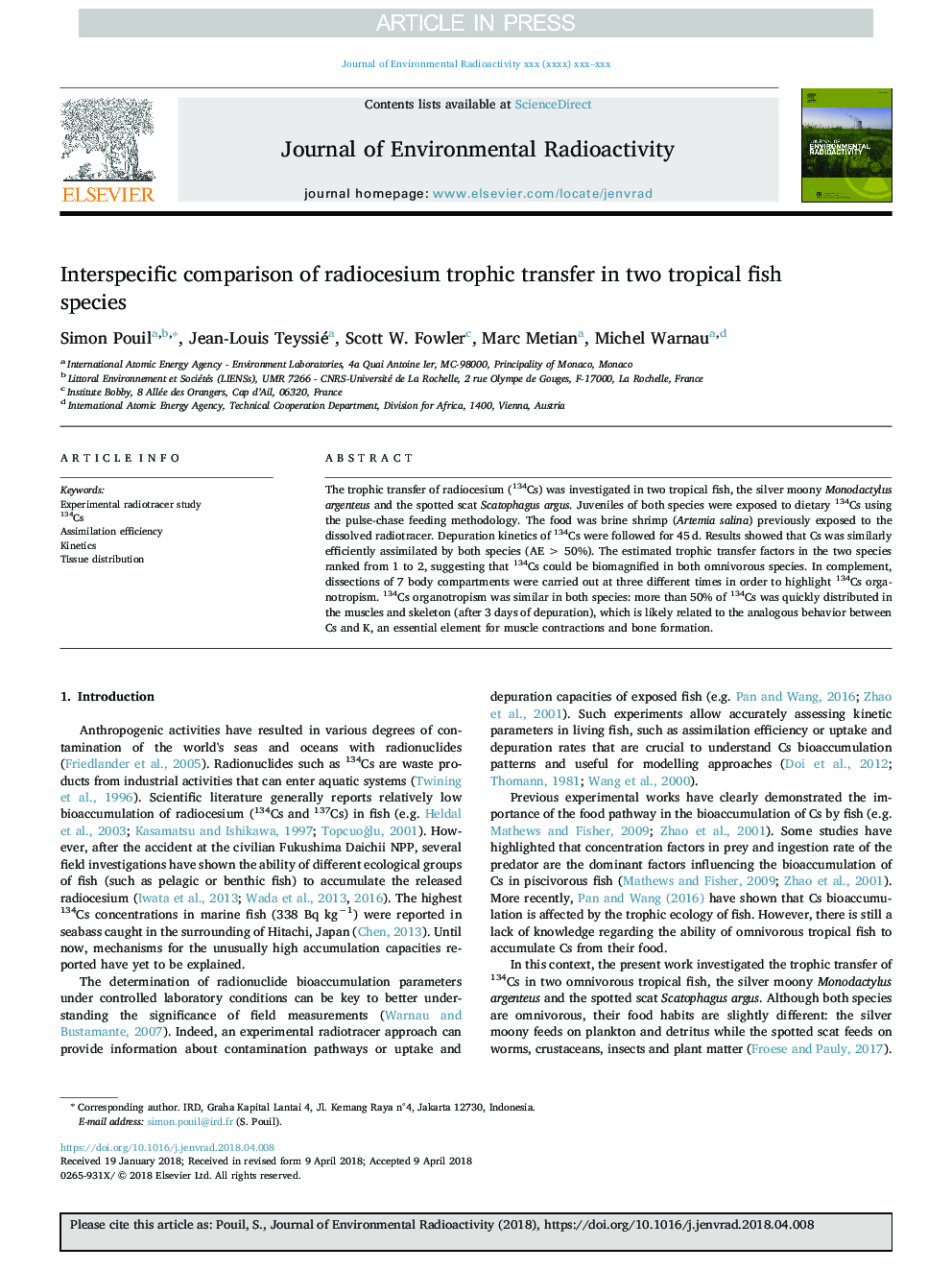| Article ID | Journal | Published Year | Pages | File Type |
|---|---|---|---|---|
| 8080575 | Journal of Environmental Radioactivity | 2018 | 5 Pages |
Abstract
The trophic transfer of radiocesium (134Cs) was investigated in two tropical fish, the silver moony Monodactylus argenteus and the spotted scat Scatophagus argus. Juveniles of both species were exposed to dietary 134Cs using the pulse-chase feeding methodology. The food was brine shrimp (Artemia salina) previously exposed to the dissolved radiotracer. Depuration kinetics of 134Cs were followed for 45â¯d. Results showed that Cs was similarly efficiently assimilated by both species (AEâ¯>â¯50%). The estimated trophic transfer factors in the two species ranked from 1 to 2, suggesting that 134Cs could be biomagnified in both omnivorous species. In complement, dissections of 7 body compartments were carried out at three different times in order to highlight 134Cs organotropism. 134Cs organotropism was similar in both species: more than 50% of 134Cs was quickly distributed in the muscles and skeleton (after 3 days of depuration), which is likely related to the analogous behavior between Cs and K, an essential element for muscle contractions and bone formation.
Related Topics
Physical Sciences and Engineering
Energy
Nuclear Energy and Engineering
Authors
Simon Pouil, Jean-Louis Teyssié, Scott W. Fowler, Marc Metian, Michel Warnau,
